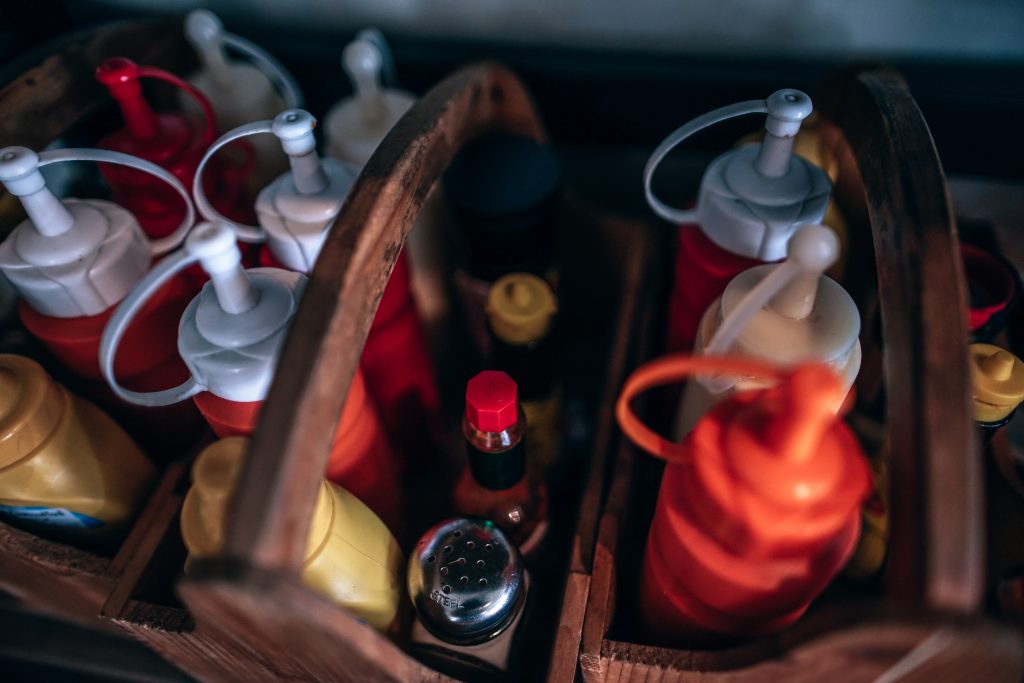Go to any restaurant and I’ll bet that nearly all of them have some form of ketchup and mustard available upon request or placed on every table. These two are not only staples in American restaurants, but also in various cuisines around the world. The tangy flavor of ketchup and the sweet or spicy flavor of mustard complement various dishes by enhancing the flavors without totally overpowering the main flavor of the dish.

Because of its popularity, it’s no surprise how many people have come to love this iconic pair. Today, we’ll talk about everything you need to know about ketchup and mustard: from its history, to its development in various country, down to how to make your own version.
Ketchup
Ketchup comes in a lot of names – catsup, ketsup, tomato sauce – and is even made from various vegetables other than tomato. Because it’s such a common blend of ingredients found around the world, other countries may have a different take. Some countries want a blend that tastes similar to a tomato, while others prefer a sweeter blend. There are even non-tomato based takes such as mushroom ketchup and banana ketchup.
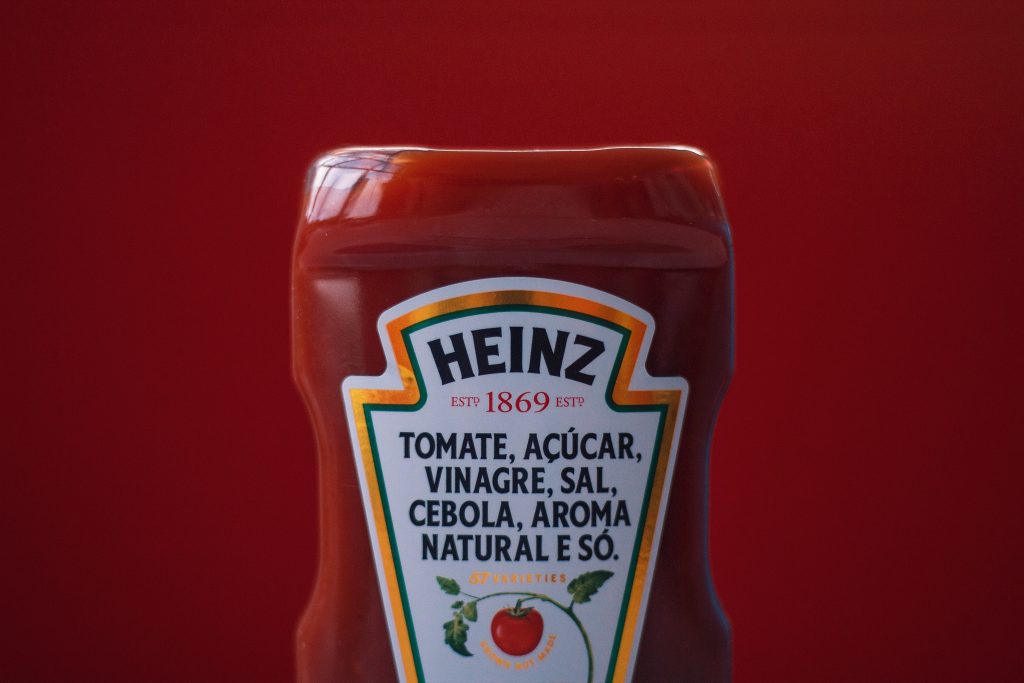
History of Ketchup
Oddly enough, the first form of ketchup wasn’t made with tomatoes. The word ketchup may have come from the 17th century Chinese dish, kôe-chiap or kê-chiap, which actually means brined pickled fish. This was a mixture of pickled fish such as salmon or shellfish mixed with spices. By the 18th century, it had spread to Malaysia, where it was called “kicap,” pronounced kay-chap. This was where the English settlers got a taste of the dish and brought it with them back to England and later on America.
Back in England, the English took kicap and modified it to their style by adding mushrooms and shallots. It wasn’t the red we know today, but rather, an unappetizing brown that resembled mud. After 1742, the fish sauce took a back seat and mushrooms became the main ingredient, and was eventually brought to what would become the United States. A hundred years later, ketchup was still any dark sauce that had mushrooms or walnuts.
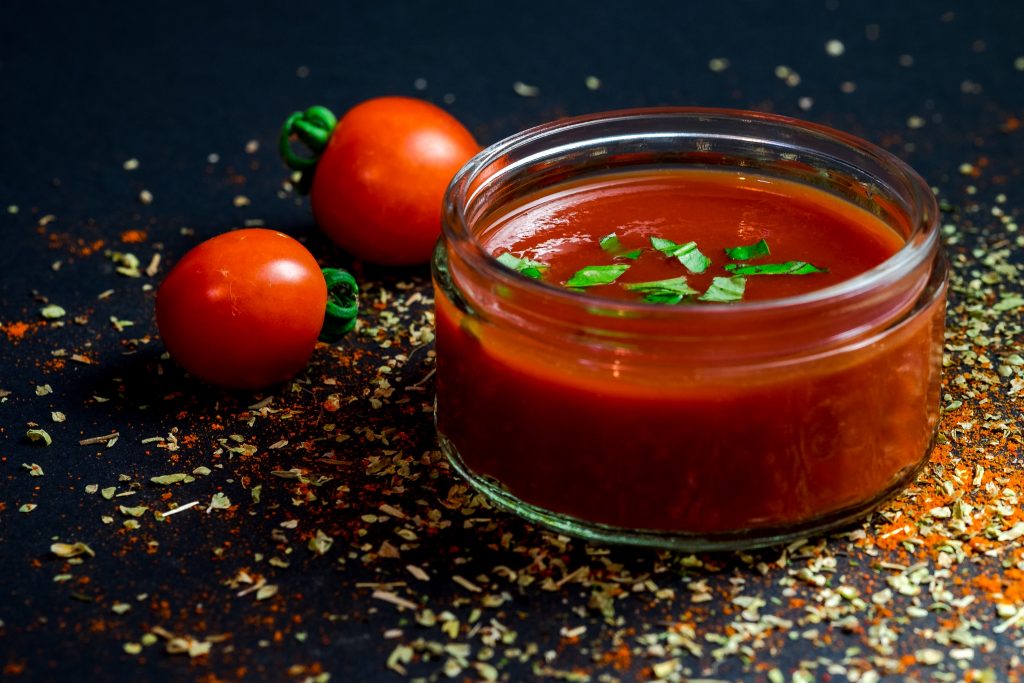
The first tomato ketchup recipe was supposedly recorded around 1817. However, we can’t be totally sure about this since it’s possible others were already creating but not recording it. The recipe still included anchovies, but it wasn’t until the 1850’s when anchovies were removed and the recipe resembled the ketchup we know today. It was a sour tomato blend, but the Americans created sweeter ketchup blends by the 19th century.
Ketchup Flavors
Today, tomato ketchup is well-known throughout the United States and the rest of the world. Traditionally, it has a sweet and tangy flavor which comes from the tomatoes, sugar, vinegar, and whatever blend of spices and herbs used by manufacturers. It’s no longer a dish on its own, but is a condiment used to complement food flavors and textures that go well with it. French fries in fast food restaurants are often served with ketchup. Burgers and hotdog sandwiches have ketchup on them. Some meats taste better with a side of ketchup.
Other countries have their own take on ketchup. In Germany, for example, curry ketchup is a spiced version of ketchup. It has additional curry powder that brings out the curry flavor, and it reminds you more of spicy curry than it does of the traditionally tomato ketchup.
In Southeast Asia, the Philippines has a fruit ketchup called banana ketchup. During World War II, a lack of tomatoes and a high production of bananas led local ketchup manufacturers to create, patent, and sell banana ketchup. Because it replaces tomatoes with bananas, its natural color is a dark yellow. However, mass-produced banana ketchup is dyed to resemble tomato ketchup. Compared to tomato ketchup, banana ketchup has a sweet taste that highlights the spice blend more.
Even in the United States, fruit ketchups are sold in various stores. Small companies such as Chups sell fruit ketchup flavors such as cranberry, mango, peach, plum, blueberry, and spicy pineapple. These may seem odd to you, but the flavor may surprise you.
How to Make Your Own Ketchup
A basic tomato ketchup blend uses basic ingredients you may find in your local grocery store. If you like ketchup on your food but want to control how much sugar or other ingredients go in it or want to remove the preservatives manufacturers put into their food, you can opt to make your own ketchup instead.
This recipe provides a basic ketchup blend with a taste similar to other ketchup blends in the market. You can find the ingredients in your local supermarket or grocery store. This recipe from CincyShopper calls for tomato paste, but once you’ve gotten the hang of making your own ketchup, you can opt to replace store-bought tomato paste with fresh tomatoes for a healthier result. You’ll need these ingredients:
- 12 oz. tomato paste (Available in either can or packet form. Note that the brand and flavor may affect the ketchup flavor)
- 1 ¼ cup lukewarm water
- ½ cup vinegar
- ½ cup brown sugar
- 1 tablespoon onion powder
- 1 tablespoon garlic powder
- 1 teaspoon Worcestershire sauce
- ¼ teaspoon allspice
- 1/8 teaspoon ground cloves
- 1/8 teaspoon cayenne pepper
- Salt to taste
Simply combine all the ingredients together until it is well blended. When adding the powdered ingredients, I recommend passing them through a sieve to remove any lumps (especially with the brown sugar and other spices that might have spent a while in your spice rack) so that, once mixed with the wet ingredients and made into ketchup, you won’t get a mouthful of brown sugar or cayenne pepper to ruin your meal.
Once blended, transfer it into an air-tight container – preferably a glass bottle for easy dispensing. Refrigerate it for at least four hours, and you have your own homemade ketchup.
Mustard
Though not as popular as ketchup, mustard is still a staple in many restaurants. What I like about mustard is that its flavor range is much wider than ketchup. Some mustards are sweet, some are salty, and some have a spicy kick that’s just right. Unlike tomatoes, however, mustard comes from mustard seeds which aren’t available everywhere in the world.
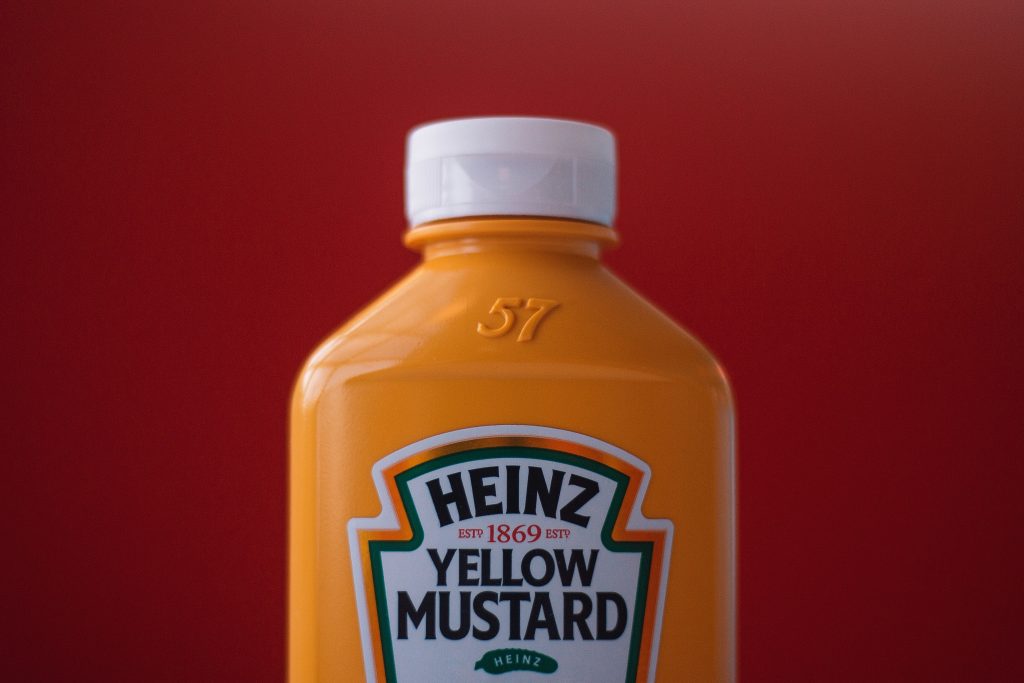
History of Mustard
Archaeologists found evidence that ancient civilizations along the Indus Valley cultivated mustard seeds as early as 1800 BC. Romans may have exported mustard seeds from the valley – which they made into a condiment mixed with unfermented grape juice, herbs, vinegar, fish sauce, and oil – and exported it to Paris, where it began production.
Manufactured mustard most likely began in Paris around 1292. The term “Dijon mustard” most likely came from Dijon, France, which was, during the 13th century, the center for mustard production. Eventually, production grew and Dijon was eventually known as the mustard capital of the world.
Mustard was exported to England by 1390 since one of King Richard’s cooks wrote about making mustard balls and was even mentioned in the Shakespeare play, King Henry the Fourth, Part II. From England, mustard must have been one of the things brought to the New World.
The first time hotdog sandwiches were dressed with mustard was by 1904 in the St. Louis World Fair. Today, it is used on plenty of cold meats and other meat dishes in need of additional flavor.
Mustard Today
Today, mustard is a popular condiment within the same leagues as ketchup, mayonnaise, barbeque sauce, and others. Not a lot of people may appreciate its unique flavor like they do with the popular ketchup, but those of us who can enjoy some Dijon on our hotdogs find it also works with other meat.
While mustard usually has a wide range of flavors, its most basic form has a certain heat to it, though it’s not enough to be considered spicy. This may largely depend on factors such as the seed type, how it was made, and the ingredients used to make mustard. Like ketchup, its origins and ingredients make it very flexible and allow people to make their own mustard at home.
Unlike ketchup, which uses perishable ingredients, mustard has an indefinite shelf life because of its antibacterial properties. You won’t find it going bad, but if you see it becomes dry, adding some wine, vinegar, or water, can return it to its normal texture. The ingredients may also separate, but simply shaking it can return it to its normal state.
The only change there may be is the flavor: left unrefrigerated, mustard may turn bitter. If left in an open container and placed in a well-lit area, mustard may also lose its flavor. To maintain its flavor, it is best to store it in your refrigerator after opening the bottle.
How to Make Your Own Mustard
According to Hank Shaw’s Wild Food Recipes, if you have mustard seeds and water, you can easily make mustard. Adding vinegar and salt only helps keep its flavor, but it is not necessary if you’re going to consume the mustard immediately. It won’t spoil, but the mixture is prone to losing flavor if left for a long time. To start this recipe, you’ll need the following ingredients:
- 6 tablespoons of mustard seeds – your choice of white, brown, or black mustard seeds
- Half a cup of mustard powder
- ½ cup of water (replace it with beer for more flavor)
- 3 tablespoons of vinegar (cider white wine)
- 2 tablespoons of salt
- Optional (depending on the type of mustard you want to make)
- 1 teaspoon of ground turmeric (for Dijon mustard)
- 2 tablespoons of honey
- ¼ cup of minced fresh herbs
Start by grinding the mustard seeds. You can use a spice grinder, coffee grinder, or a mortar and pestle. Black and brown mustard seeds are much harder, so soaking them in water overnight can make them easier to grind. You can grind them as coarse or as fine as you prefer. You can also choose to forego the seeds or the powder and use only one of the two.
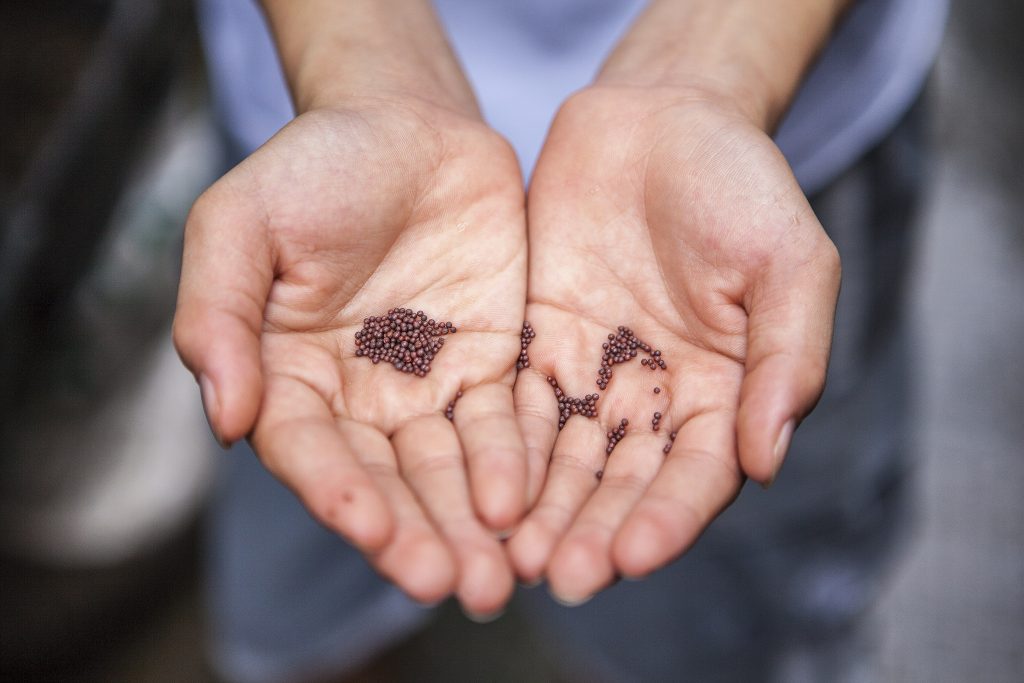
Put the ground seeds in a bowl and add in the mustard powder, salt, and the optional ingredients. Mix it with water until fully incorporated. After around 10 minutes, add in the vinegar, store in an air-tight jar, and store in the fridge for at least 12 hours before using. During this period, it should thicken up and lose its bitterness. If you don’t like bitter mustard, avoid eating it for a few days. The result creates around one cup worth of mustard with a shelf life of around one year.
While both ketchup and mustard share similar features and are both good with some meals such as hotdogs, both have their own unique flavors and compliment the flavors of a wide variety of dishes. So, the next time you pick up one of these to add some flavor to your food, keep in mind that it took hundreds of years to get these to the way they are now.

